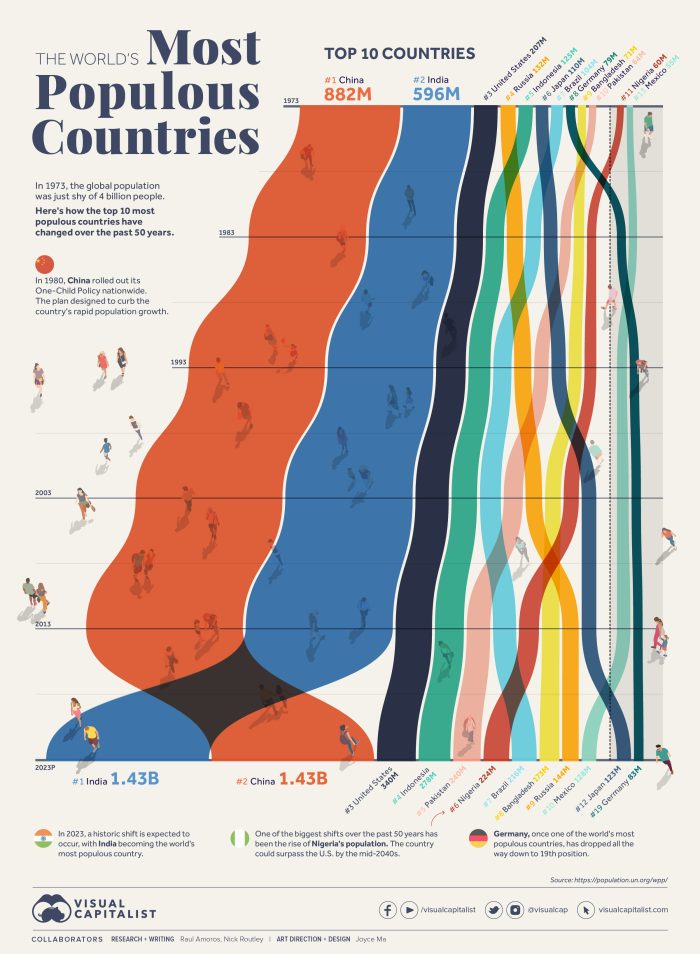
An interesting look at population changes at the country level over the last 50 years.
India Climbs to the Top
As we scan the globe, it’s clear that the population dynamics are in a constant state of flux. Take India, for instance. Known for its vibrant culture and bustling cities, India is now also recognized as the most populous country on Earth. Yes, you’ve heard it right! India has surpassed China, once the leader in this category. According to the United Nations, India’s population was estimated at 1.38 billion in 2020, slightly edging out China’s 1.34 billion. But what’s driving this population surge? Factors such as higher fertility rates and improved healthcare facilities have played a significant role in India’s population growth.
Germany’s Population Puzzle
On the other end of the spectrum, we have Germany. In a surprising turn of events, Germany has seen a rapid decline in its global population rank. From being the 14th most populous country in 2000, it slid down to the 17th position in 2020. This downward trend is largely attributed to lower birth rates and an aging population. According to the World Bank, Germany’s fertility rate stood at just 1.57 in 2018, well below the replacement level of 2.1. As the country grapples with this demographic challenge, it’s clear that Germany’s population trajectory serves as a stark contrast to India’s.
Nigeria’s Population Boom
Now, let’s head over to Africa. Specifically, Nigeria. As Africa’s most populous country, Nigeria has been witnessing a steady increase in its population. The World Bank estimates Nigeria’s population to have grown to 206 million in 2020, a stark increase from 123 million in 2000. This growth is largely driven by high fertility rates, with Nigerian women having an average of 5.4 children. With this upward trend, Nigeria is projected to become the world’s third most populous country by 2050, overtaking the United States. Fascinating, isn’t it?
China’s One-Child Policy Impact
Speaking of population trends, we can’t overlook China’s historic one-child policy. In effect from 1979 to 2015, this policy was aimed at controlling the population explosion. However, it has had a profound impact on China’s population dynamics. Due to this policy, China now faces a skewed sex ratio and an aging population. The United Nations estimates that by 2050, about a third of China’s population will be over 60. This demographic shift poses significant social and economic challenges for the country.
Global Population Growth: The Future
As we’ve seen, population trends vary significantly across different countries. But what about the global population growth? Well, it’s projected to continue, albeit at a slower pace. According to the United Nations, the world population, currently at 7.8 billion, is expected to reach 9.7 billion by 2050. However, this growth won’t be evenly distributed. Most growth is expected in developing countries, while developed countries may witness a population decline. As we move forward, these population dynamics will continue to shape and reshape our world in countless ways.
And there you have it. A brief, yet engaging tour of the world’s population trends. As always, remember that numbers only tell part of the story. Behind these statistics lie intricate tales of cultural, social, and economic transformations. So, the next time you come across a population statistic, take a moment to ponder the fascinating stories hidden behind those numbers.
